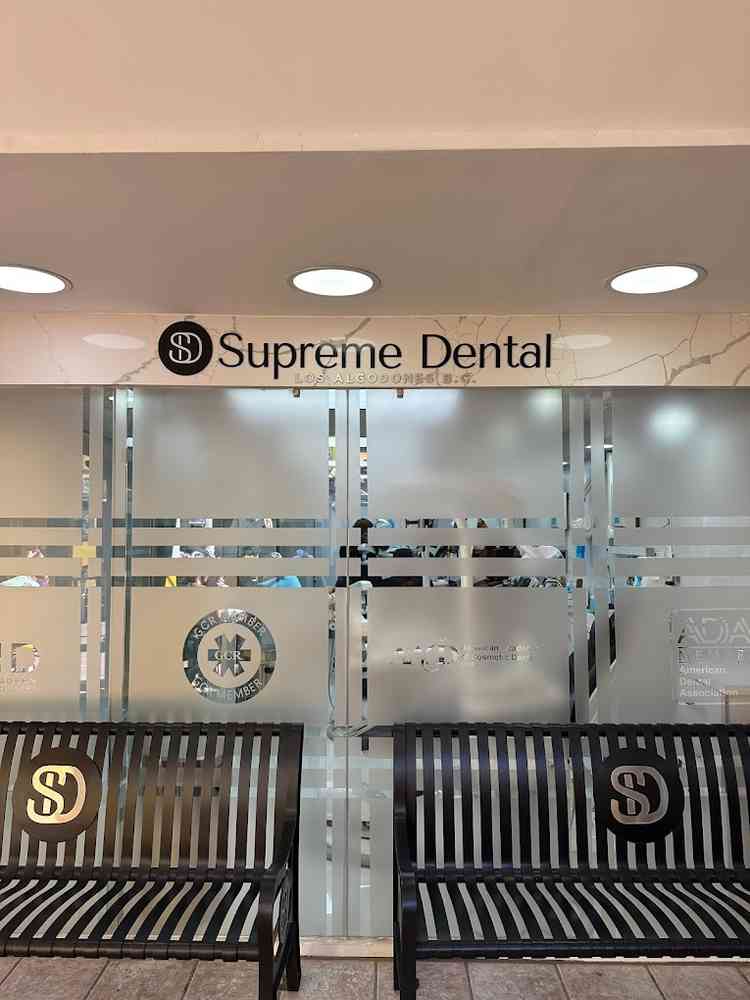How to Know If You Have an Abscess Tooth: Symptoms You Shouldn’t Ignore

Prathyusha Itikarlapalli
- Content Writer

Table of contents
- Dental Infection and Tooth Abscess
- Causes of a Tooth Abscess
- How to Know If You Have a Tooth Abscess?
- Tooth Infection Without an Abscess?
- How Dentists Diagnose an Abscess?
- What to Do If You Have One?
- When Will You Feel Better After Treatment?
- Waiting for a Dental Appointment?
- When It's a Dental Emergency?
Key Takeaways
- A tooth abscess appears as a white-colored, pus-filled boil on the gums and cheeks. These may occasionally bleed or rupture and are often associated with intense pain, redness, and swollen gums.
- Tooth infections are the most common cause of dental abscesses. Dental injuries, foreign objects, and a weakened immune system are the other causes.
- Poking or cutting an abscess to drain it at home can worsen the infection. Only dentists can effectively treat dental abscesses. When left untreated, an abscessed tooth can lead to life-threatening conditions.
Dental Infection and Tooth Abscess
The oral cavity is home to thousands of bacterial species. While some are beneficial bacteria, others are harmful and can cause tooth infections. Tooth infections are serious, causing hospitalization in around 1 in 2,600 people in the United States.[1] They occur when the oral bacteria make their way into the tooth structure. This causes pulp infection and inflammation, which feels like intense pain, sensitivity, and swelling. This bacteria can spread to the surrounding bone or gum tissue, forming localized pus pockets, also called tooth abscesses. Dental abscesses formed near the root tip of the infected tooth are called periapical abscesses. These are a result of pulp infection and are more common in non-vital teeth, which are teeth that have lost access to their blood supply.[2] On the other hand, periodontal abscesses are localized pus boils within the periodontal pockets. These spaces develop when the gums pull away, creating an opening for bacterial build-up and potentially causing infection.[3]

Understand the Tooth Abscess Reasons
A tooth abscess can develop for several reasons. From untreated dental infections and gum disease to injuries, past dental work, or even a weakened immune system. In some cases, something as simple as a trapped food particle can trigger the problem. When bacteria invade the tooth or its surrounding tissues, the body’s immune system responds. In response, pus forms, a thick fluid composed of white blood cells, bacteria, and other immune cells. Below, we break down each of these causes in more detail:
Dental Infections
Untreated tooth infections are the primary cause of dental abscesses. Enamel is the outermost and hardest part of the natural tooth. The bacteria enter the tooth interior through small crevices or cracks. It infects the soft dentin layer and the pulp, containing the nerves and blood vessels. The pulp is directly connected with the underlying bone structure. Pulp infection can, therefore, easily spread to the surrounding jawbone and gum tissues. Tooth abscesses form when bacteria spread, causing a buildup of pus either within the gums or at the infected tooth root tip.
Gum Problems
Gum diseases (periodontal issues), such as plaque buildup and tartar, provide breeding grounds for bacteria. Compromised oral hygiene increases the bacterial load, making your teeth vulnerable to chronic infections. Gingivitis, especially due to bacterial infection below the gumline, can lead to the formation of pus pockets between the teeth and gums.
Dental Injuries
Dental injuries cause chips, breaks, and cracks within the teeth. Bacteria can enter the tooth structure, leading to pulp infection and dental caries. These are a direct cause of dental abscesses.
Previous Dental Work
Inappropriate dental work, like a failed root canal treatment, leaky fillings, or a root canal followed by a dental crown that leaves open, uneven edges, may cause gum inflammation. Furthermore, dental decay underneath fillings or crowns is a sign of root canal reinfection, which can lead to a tooth abscess.
Foreign Objects
Foreign bodies, such as toothbrush bristles or food particles like popcorn husks, become trapped between teeth or beneath the gum line. Routine oral hygiene measures, like brushing and flossing, cannot remove them. This leads to gum irritation, creating pockets of pus near the gum line.
Weak Immune System
A slowed-down immune response cannot effectively kill the bacterial infection. Candidates suffering from chronic diabetes, HIV, or autoimmune diseases or undergoing cancer treatment, have a weakened immune response. Their body fails to launch a stronger immune response against the growing infection. As a result, the bacteria invade the deeper tissues, and the body is unable to control them, leading to the formation of pus.
How Can You Tell if You Have a Tooth Abscess?
The tooth abscess appears like small pimples or boils filled with pus near the infected tooth on the gums. Below, we list a few common symptoms alongside these visual symptoms of a tooth abscess.
- Throbbing pain: Dental abscesses resulting from pulp infection are typically characterized by intense pain deep within the tooth. The infected pulp swells, exerting pressure on the tooth and causing intense pain.
- Swelling and redness: The gums near the affected area typically appear tender, swollen, and reddish. This is indeed an early stage abscess in mouth cheek. A few candidates experience facial swelling, especially on the cheeks near the infected tooth.
- Sensitivity: Increased sensitivity to too hot or too cold foods, especially when you bite on them. It occurs due to weakened enamel and dental caries.
- Bad breath and taste: A persistent bad taste or foul smell in the mouth due to bacterial growth and draining of pus.
- Difficulty chewing: Pain and difficulty chewing are often caused by tooth sensitivity and pus-filled boils, which can make it challenging to eat food.
- Swollen lymph nodes: Lymph nodes in the jaw or neck area appear swollen and tender due to the body's immune response to the growing infection.
- Fever: Fever is one of the common symptoms of tooth infection spreading to body. Bacterial spread into the systemic blood circulation results in a rise in body temperature.

Alongside this, you will experience symptoms of a tooth infection and its spread to other parts. This is particularly the case when there is a heavy bacterial load and a weakened immune response by your body. In case you are wondering how to know if tooth infection is spreading, worry not, as we have covered this for you. The symptoms of a tooth infection spreading to the body include fever, rapid heartbeat, chest pain, difficulty breathing, difficulty swallowing, headaches, fatigue, and general tiredness. While these are the noticeable symptoms, many patients ask us if the symptoms of a tooth abscess often go unnoticed. We will address this in the upcoming section.
Can You Have a Tooth Abscess and Not Know It?
In its early stages, a dental abscess may not cause noticeable pain. However, most patients complain of pain and tenderness due to a dental abscess until it bursts and the pus is released. In rare cases, patients may not experience pain when the infected tooth suffers nerve damage. In general, a tooth suffers nerve damage due to a previous dental procedure, like implants, severe tooth decay, or trauma. Note that a painless tooth abscess does not mean you neglect the tooth infection. The severity remains the same, requiring prompt care.
How Long Can You Have a Tooth Abscess Without Knowing?
The duration a tooth abscess can go unnoticed ranges between several weeks and to few months. While most dental abscesses are easily noticeable because of pain, a few can go unnoticed, especially during their early stages. However, early detection is crucial to the successful management of tooth abscesses. This can be achieved by attending regular dental check-ups. It also aids in the early detection of tooth infections.
Can You Have a Tooth Infection Without an Abscess?
Yes, it is possible to have a tooth infection without an abscess. Note that a tooth abscess is one common outcome of dental infection but not its sole possibility. In some patients, a dental bacterial infection can lead to a pulp infection and may necessitate root canal treatment. In others, it may spread to the surrounding jawbone or gum tissue. In a few cases, it may even enter the systemic blood circulation and spread the dental infection to the heart and brain. In rare cases, it can also block the airways, leading to death.
A tooth abscess is dangerous, and should not be ignored. Whether it's a painful or a painless pus pocket, your tooth abscess requires prompt dental care. If you're unsure about your symptoms and asking yourself, "How do I know I have a tooth abscess?", there are signs only a dentist can confirm.
How Does a Dentist Confirm the Presence of a Tooth Abscess?
Your dentist will perform a physical examination by visually looking at the affected tooth. They will look for symptoms of redness, swelling, and drainage. Further, they also check for the symptoms of sensitivity to touch, heat, and cold temperatures. They also recommend dental X-rays to detect the extent of infection. X-rays track the presence of pus, the extent of bone damage, and the spread of infection within the oral cavity. In advanced stages of infection, dentists may perform CT scans to identify the spread of the infection to areas such as the neck and face. Additionally, thermal tests evaluate the viability of the inner tooth pulp. Alongside, undergoing routine blood tests will help you assess the severity of the infection and the extent of its spread.

What To Do if You Have an Abscess Tooth?
Book a dental appointment if your teeth are affected by a dental abscess. Your dentist will confirm the presence of a tooth abscess and discuss the treatment options with you. Treatment depends on the infection severity and the immune response. An antibiotic dosage (such as Amoxicillin, Metronidazole, Azithromycin, or Cefoxitin) usually accompanies it.
- Draining a tooth abscess: Dentists make small incisions near the affected tooth to drain the pus. They disinfect the area using a saline solution and keep it open by placing a rubber tube in the wound.
- Root canal therapy: RCT is required in cases of pulp infection. Dentists drill a tiny hole within the infected tooth and clean the root canals. They remove the debris and infected tooth pulp. Next, they seal the cleaned root canals using filling material and cover the tooth with a crown to prevent further bacterial entry.
- Tooth extraction: Your dentist will extract the tooth in case it's severely damaged and cannot be saved. They perform a safe extraction procedure to cut off the spread.
Will a Tooth Abscess Go Away With Antibiotics?
While your dentist will also prescribe antibiotic doses alongside the treatment, antibiotics cannot solely remove the tooth abscess. Note that antibiotics kill the bacteria and prevent their spread. While this reduces the bacterial load, the symptoms of tooth abscess, such as redness and tenderness, slowly subside. But it cannot be a standalone treatment. A professional dental treatment, such as abscess drainage, root canal therapy (RCT), or extraction, is necessary and cannot be substituted with over-the-counter remedies.
When Will I Feel Better After Treatment for a Dental Abscess?
The pain, inflammation, and sensitivity will reduce in a few days after prompt dental treatment. You will initially experience discomfort due to surgical incisions for pus drainage. This will heal gradually. Note that the healing time varies with the patient's overall health condition. However, it cannot be a prolonged period, as this is a sign of a persisting infection or delayed healing. Don’t hesitate to see your dentist if your healing process takes longer than a week.
What Do I Do if I Need To Wait for a Dental Appointment?
A few dental appointments may demand long wait times. While you wait for the dental appointment, follow these home remedies to ease the pain and swelling. Gently swishing warm salt water for a few minutes can help reduce inflammation. It temporarily relieves you of pain and tenderness. Note that these are not a substitute for professional dental care. Below, we answered a few questions that people ask us in this regard.
How To Get Rid of a Tooth Abscess Without Going to the Dentist?
Only a dentist can safely and effectively treat a dental abscess. While some patients may rely on painkillers, these offer no real solution. Similarly, home remedies may provide temporary relief from the pain and discomfort, but they cannot address the root cause. Below are a few common at-home practices people suffering from tooth abscesses adopt. We also briefed them on the effectiveness.
- To reduce the redness and tenderness around the gums, gently swish warm salt water in the oral cavity.
- Avoid consuming foods that are too hot and too cold to prevent tooth sensitivity.
- Eat soft and easily chewable foods, such as yogurt, scrambled eggs, and mashed potatoes.
- Refrain from eating highly sugary foods and frequent snacking to slow down the bacterial progression.
- Use a soft-bristled toothbrush and avoid being too hard while brushing, as this can worsen the inflammation and potentially ruin the abscess.
While a few people recommend using hydrogen peroxide or baking soda, it's better to avoid them. Excessive or even limited use (in cases of sensitive gums) can irritate the gums, delay healing, and even cause chemical burns.
How To Get Rid of Swollen Face From Tooth Infection?
Your dentist should drain the tooth abscess for you to relieve the facial swelling it causes. Schedule a dentist consultation immediately. While you wait for your appointment, you can follow these measures to manage the swollen face.
- Apply a cold compress to slow down the blood flow to the affected area. This will also reduce inflammation and swelling.
- Sleeping upright with your head in an elevated position can help reduce fluid build-up.
When Is an Abscess Tooth Considered a Medical Emergency?
Any dental abscess needs immediate treatment. The chances of infection spreading and worsening the situation are quite high. A dental abscess may even cause death when the bacteria spreads systemically. Individuals with a compromised immune system are more prone to dental infection death. Consider a dental abscess a medical emergency when the following symptoms accompany it.
- High fever, along with fatigue and tiredness
- Swollen lymph nodes around the neck
- Bleeding gums
- Severe facial swelling, with swollen eyes
- Altered mental stage, confusion
- Severe pain with difficulty swallowing or opening their mouth
- Secretions within the mouth that are difficult to handle due to swallowing issues
Final Word!
A tooth abscess doesn’t always scream for attention. Sometimes, it whispers through subtle signs, such as tenderness, swelling, or a strange taste in your mouth. If you’re in doubt, don’t wait. Getting checked by a dentist early can save your teeth, protect your health, and spare you from a lot of pain. When it comes to infections, silence isn’t safety, it’s a warning.
If access or affordability has held you back from timely dental care, you’re not alone. At Envoy Health, we help patients take control of their oral health by connecting them with trusted dentists abroad, where quality care is often available faster and at a fraction of the cost. Sign up today and take the first step toward getting the treatment you deserve.
References
Disclaimer
The information in this article is for educational purposes only and does not replace medical advice. Always consult your doctor before starting any treatments.
An abscessed tooth that spreads can cause a puffy face, swollen eyes, or an extension of swelling over the jaws toward the neck. Alongside fever, confusion, dizziness, and loss of visual clarity are other symptoms. A ruptured abscess is often associated with fluid drainage and causes a foul taste.
Abscesses, in general, are pockets of pus formed within the body tissues due to bacterial infection. They appear as white pus-filled boils. Dentists confirm their presence through visual examination, dental X-rays, CT scans, thermal imaging, and blood tests.
An abscessed tooth that goes unnoticed can occur in its early stages. Middle- and advanced-stage abscesses cause intense pain, making them easily noticeable. However, a few candidates may experience nerve damage, which can make it difficult to detect.
It can take a few days to a few months, or in some cases, several years, for a tooth infection to cause death. While not every tooth infection can kill the individual, the chances of death are higher in immunocompromised patients and those with underlying chronic health conditions. Candidates undergoing chemotherapy, those suffering from autoimmune diseases, and those with problematic heart valves are more prone to death. More importantly, this also depends on the bacterial load and the severity of the infection. However, with prompt medical care, this can be avoided.
An abscess tooth causes intense pain, and appears as pus boils on the gums and cheeks near the affected tooth. This is accompanied by gum irritation, swelling, and redness, with a foul odor and taste. While some patients experience bleeding gums, a few notice dental abscesses that rupture with fluid oozing out.
You should not drain a gum abscess at home, as it can only worsen the condition. Poking or pressing gum abscess may push the bacteria into the surrounding tissue spaces. More importantly, attempting to drain a gum abscess at home can lead to the spread of infection.
A tooth abscess in its starting stages appears too small and negligible to the naked eye. Candidates experience gum irritation and inflammation. Tooth abscesses are visible as small pus-filled boils during their middle and advanced stages.
No, a tooth abscess cannot go away on its own. They require dental treatment, such as surgical abscess drainage, root canal therapy, or extraction, along with an antibiotic regimen. When left untreated, a tooth abscess can even lead to life-threatening situations.
So, we partner with the premier healthcare facilities!
Send me the list





